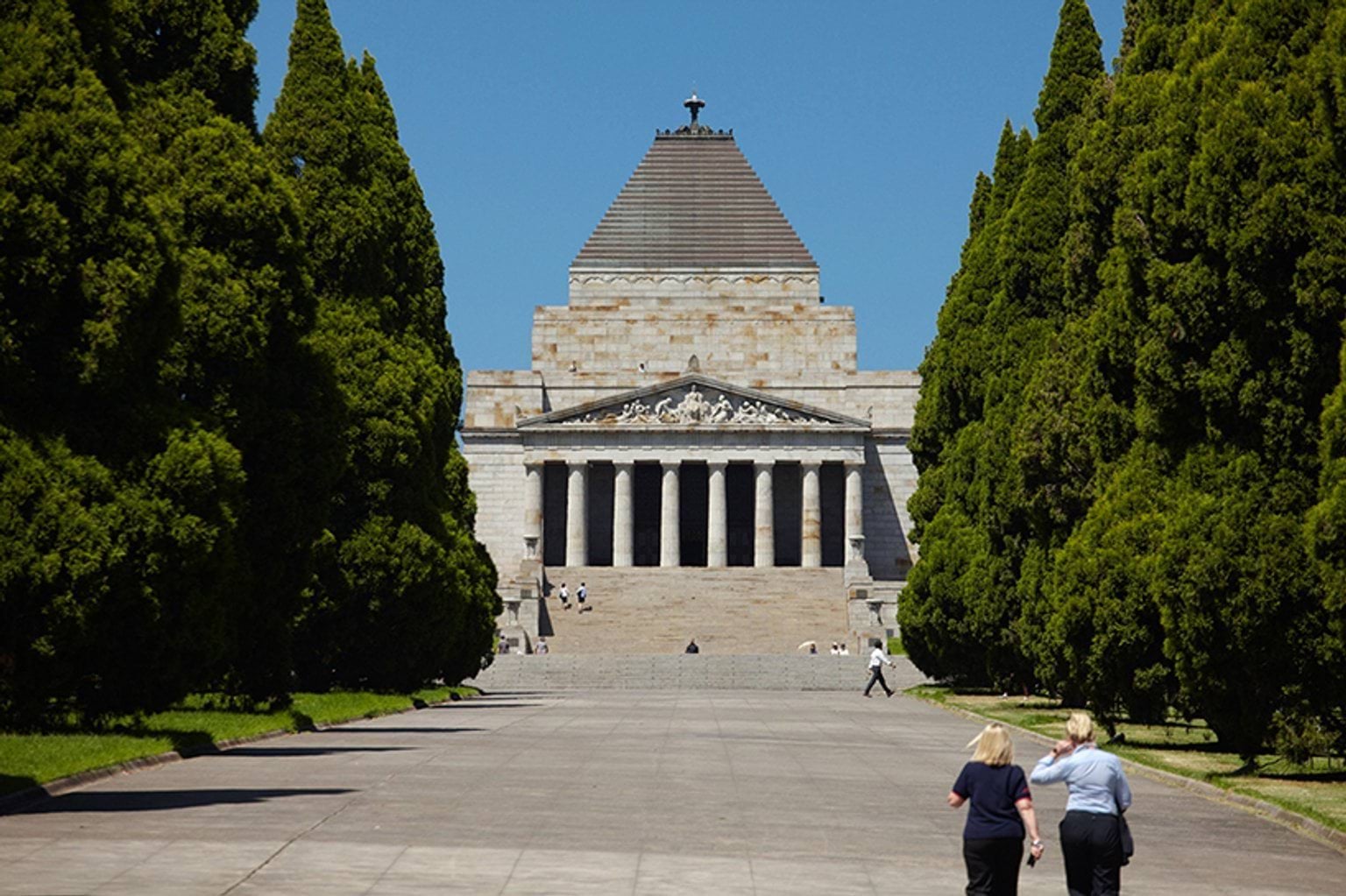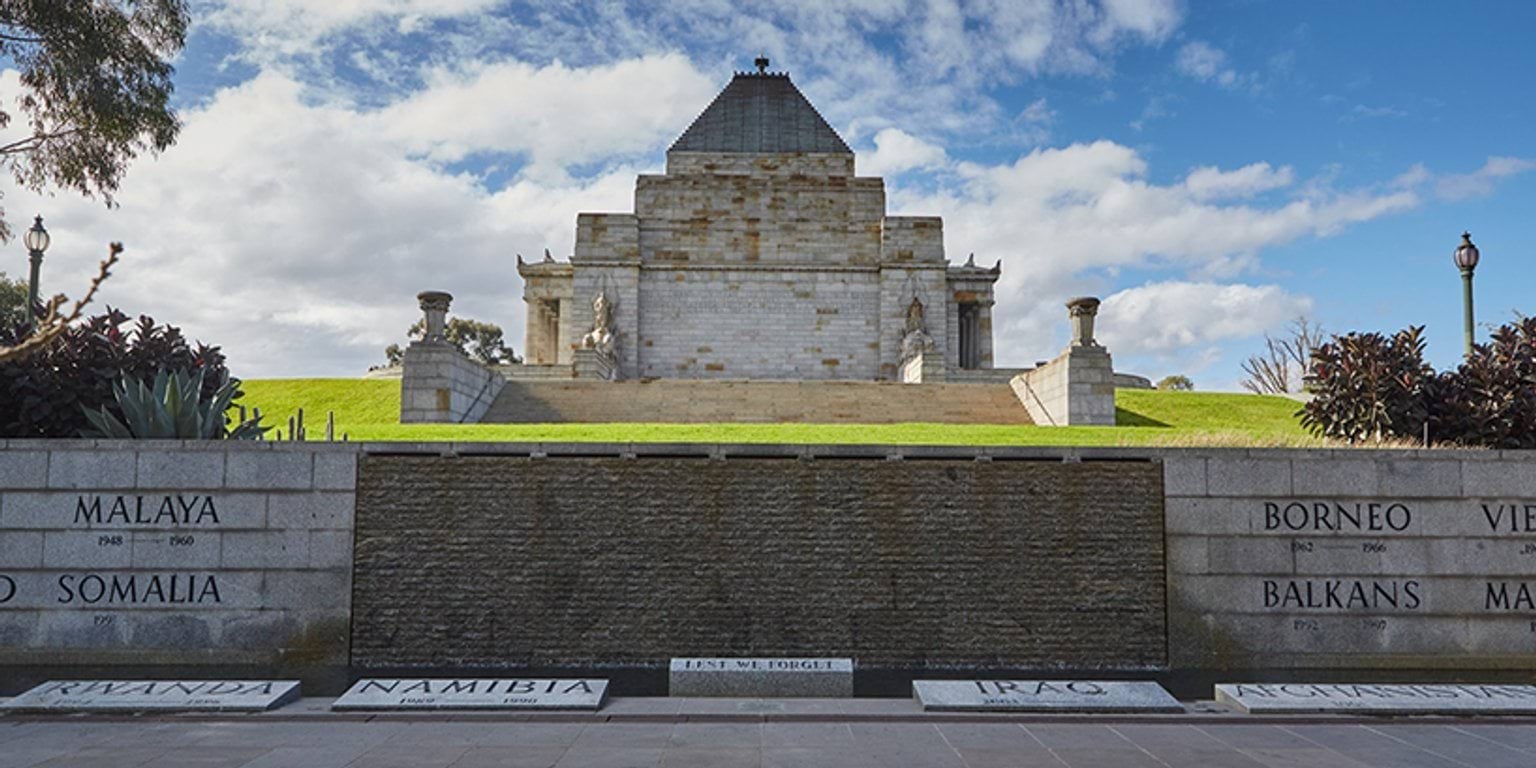The Second World War Memorial Forecourt
The Second World War Memorial Forecourt was designed by the Czechoslovakian modernist architect Ernest Edward Milston in 1949. His plan was the winning design in a competition launched by the Shrine Trustees. The challenge was to add to the memorial but not to detract from the original monument which was built to honour those who served in the First World War. The Second World War Memorial Forecourt was opened by Her Majesty Queen Elizabeth II in 1954. The Forecourt has three main elements: the Cenotaph, the Eternal Flame and the Flagpoles.
Cenotaph
The cenotaph is a prominent structure in the Forecourt. On top of the cenotaph is a modern sculpture by George Allen depicting six men in uniforms of the three Australian services: Navy, Army and Airforce. They are carrying the dead body of a comrade draped with an Australian flag. Carved on each side of the cenotaph are the locations Australians fought in the Second World War. Continuing with the Shrine’s use of Victorian materials, the main cenotaph is made from granite sourced in Harcourt in Central Victoria. The sculpture is made from Footscray basalt.
Visit the Balcony to see a different view of this sculpture.
Eternal Flame
On 28 February 1954, Her Majesty Queen Elizabeth II stood on a podium in front of a crowd of 250,000 people and pressed a button to light the Eternal Flame. It has burnt ever since. Today, the Flame provides a focus for ceremonies and is saluted during marches. Designed by Ernest Milston, the Eternal Flame symbolises eternal life. The belief is that if the Flame does not die, then neither will the memory of the fallen. Visitors continue to pay their respects at the Eternal Flame today, and you will often see a wreath laid here in remembrance. Twice a year the Flame is serviced to ensure it can continue burning brightly. During these times, the Flame is kept lit via a small lantern.
Enjoy the Flame in quiet contemplation, but please do not throw coins in.
Flagpoles
There are special rules on what flag is flown here and in what position.
The three flagpoles on the eastern side of the Forecourt are all the same height. This means that the left-hand flagpole holds the most important flag and on most days you will see the Australian national flag flying here. The Victorian state flag will usually fly in the middle. The right-hand flagpole rotates between the flags of the services: Navy, Army and Airforce. On ceremonial days the relevant military unit flag will fly. On most other days, the Aboriginal flag will fly.
If the Shrine is acknowledging a national day like Bastille Day or American Independence Day, the Australian national flag will fly in the middle. The other flags are then placed in alphabetical order from the left pole.
Can you recognise the flags flying today?
Learn more:
Explore nearby:
Explore with your family
Our Shrine Kids and Explorer Kit activities and programs take the whole family on a journey of discovery.
Download a visitor map
Navigate our key inside and outside areas.
Updated


